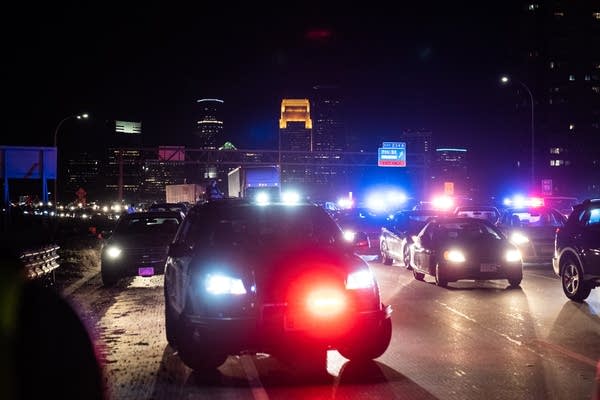Minnesota's tough new deadly force law gets second look

Traffic backs up behind police as protesters shut down I-94 in Minneapolis on Nov. 4, 2020.
Evan Frost | MPR News 2020
Go Deeper.
Create an account or log in to save stories.
Like this?
Thanks for liking this story! We have added it to a list of your favorite stories.


